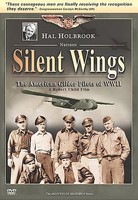About
All Feedback (809)
- brmon_8605 (1010)- Feedback left by buyer.More than a year agoVerified purchaseThank you for an easy, pleasant transaction. Excellent buyer. A++++++.
- pedaller2 (37479)- Feedback left by buyer.More than a year agoVerified purchaseFast payment. A pleasure to do business. Many thanks. A+++++++++++++
- kben4299 (197)- Feedback left by buyer.Past monthVerified purchaseHope to deal with you again. Thank you.
- skarnac (2576)- Feedback left by buyer.Past 6 monthsVerified purchaseQuick response and fast payment. Perfect! THANKS!!
- toynk (346116)- Feedback left by buyer.Past 6 monthsVerified purchaseNO HASSLES -- A FLAWLESS TRANSACTION WITH FAST PAY. THANKS!!!
- brmur1542 (1652)- Feedback left by buyer.Past 6 monthsVerified purchaseGreat communication. A pleasure to do business with.
Reviews (2)

20 Apr, 2018
Interesting But Light On Training And Developments
As the title states, it was an interesting video about what they did but it virtually ignored their training as well as later WW2 glider developments. It seems to focus on just the CG-4 glider, admittedly the most common and well known U.S. WW2 glider but by no means the only one used or flown.
Other than 1 mention in passing by an interviewee of 29 Palms, CA and a map with different colored pins showing training bases, there was no mention of where they were trained or who trained them (some of America's foremost glider and sailplane pilots and designer/pilots).
There was no mention of their training aircraft other than: "They flew sailplanes". This is not entirely true as there were modifications of the Piper Cub/L4 and Aeronca Champ/L16 into gliders by removing the engines and installing a third seat. Neither of these were sailplanes.
There was also no mention of later WW2 glider designs such as the Chase CG-20; a rear loading all metal design for the invasion of Japan that later, with engines, evolved into the C-123 transport aircraft.
Overall not a bad video, quite entertaining with archival footage but I think the researchers could have done a better job of the overall program story or else titled it something like " The WW2 Waco CG-4 Glider And Its Pilots".

12 Feb, 2018
Overall A Good BooK But Weak In Some Areas
Overall this a good book with some good information, particularly the early chapters on tools, work space setup and the how-to’s on measuring tools. The chapters on metal work are full of good information as are the sections on stock work.
Then we come to the chapters on actual firearms and we have some good information on the M1903, M1911 and M14; but most the information seems to be reprinted from the military manuals. Including the M14 sections on selective fire conversions and grenade launching which would be of little to no use to the civilian gunsmith.
However, because there are so many 1903’s, 1911’s and semi auto only M1A derivatives of the M14 in the shooting world, the majority of information is still germane.
The section on revolvers and revolver problems unfortunately has almost no meat to it. While touching on some revolver problems, there is nothing about how to correct the problems. In fact; the revolver cutaway shown and described is a New Army/Navy from the late 1800’s to early 1900’s and is in no way illustrative of contemporary Colt revolvers.
Overall though. It is a decent book with a lot of good information in it although weak in some areas. Not a bad book for a beginner but a more advanced hobby gunsmith or budding professional would find it lacking and not really a complete guide as the title would suggest.
